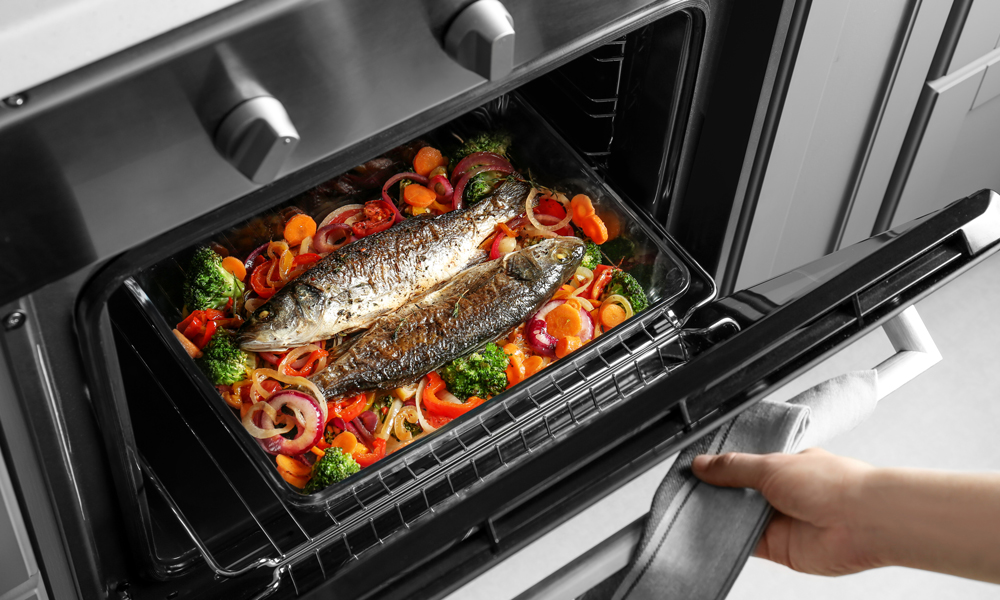We believe, however, that digital olfaction will be key to increasing the adoption of smart consumer appliances. Not only will it make consumer’s lives easier, but it promises environmental and safety benefits as well. Below are some of its top use cases.
Cooking Automation
One of the primary applications of digital olfaction in consumer appliances involves cooking. Specifically, being able to detect changes in odor over cook time—from raw to cooked. Imagine your smart stove sending you an alert once your chicken was cooked to a perfect 165° Fahrenheit (75° Celsius) based on odor alone. But it could also signal your oven to shut off before your food is burnt, based on personal preference.
This not only ensures you’re protected from possible food-related illness as a result of undercooked food, but it provides a more sustainable option by helping you to save energy at the same time. If your oven shuts off at the exact moment of doneness, you’re not keeping it on for longer than it needs to be. At the same time, it also prevents you from having to throw out burnt or overdone food items.
What’s more, when it comes to cooking automation, or smart home automation in general, we’re seeing more integration and data connectivity. We’ve already witnessed this with the Nest Protect smoke detector, which communicates with smart lights that flash red if smoke is detected in the home. A similar scenario is possible with the smart oven and digital olfaction. Smell sensors could communicate with your smoke detector to let you know food is burning.

Food Storage Monitoring
Beyond ensuring a product cooks to its correct level of doneness, other food safety applications involve the storage of food items.
For example, thanks to the rise in popularity of the keto and paleo diets in the United States, which are both high in animal products, we’ve also seen a surge in meat delivery subscription services like ButcherBox. In Europe, more consumers are adopting a vegan or vegetarian diet, which results in more produce with a shorter shelf life. The result is mass quantities of meat and produce in refrigerators. Odor detection within a smart refrigerator would be able to alert you when it’s time to consume those products before their expiration.
In addition to being able to identify when a food product may spoil, digital olfaction can enable your refrigerator to do the opposite as well and alert you when a food is ripe. All in all, preventing unnecessary food waste.
Lastly, similar to the integration work we’re witnessing on the automation front, the same is taking place within existing consumer apps. For instance, by integrating food odor data with recipe or shopping list apps, you’ll be able to enter a grocery store and know exactly what you need to buy to prepare that new recipe you’ve been dying to try, or what to pair with that salmon that’s about to expire.
When it comes to digital olfaction and smart consumer appliances, we’ve only just scratched the surface of what’s possible. The power of odor detection will transform life in the kitchen, and in time, every device & product will be able to make your life easier, safer, and more sustainable.

